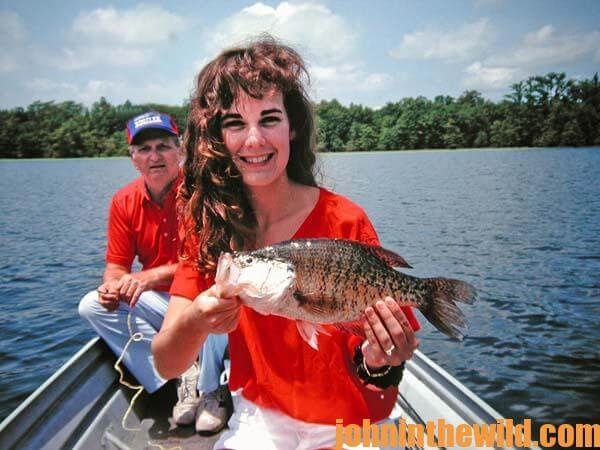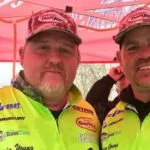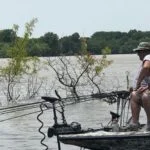John’s Note: Fishing over the years with some of the greatest crappie fishermen in America, I’ve discovered a couple of all-important secrets to catching really big crappie. If you fish for crappie in a lake that traditionally has homed monster-sized crappie in a state that manages its crappie in places where no other crappie fishermen fish, you’ll consistently catch bigger crappie. You can adapt these strategies to where you fish and catch big slab crappie throughout the year.
 My late friend, Steve Pope of Centre, Alabama, also caught big crappie that you couldn’t see on a depth finder, including crappie holding…
My late friend, Steve Pope of Centre, Alabama, also caught big crappie that you couldn’t see on a depth finder, including crappie holding…
* so close to the surface that the boat would spook them;
* so near the bottom that the depth finder couldn’t separate the crappie from the bottom; and
* in the root systems under stumps.
When I asked Pope how he found crappie he couldn’t spot on his depth finder, he answered, “If I troll in an area where crappie are holding, and I don’t see them on my depth finder, then I know I’ll locate the crappie either less than 2 feet from the surface or right on the bottom. If crappie are holding close to the surface, the boat will spook them, and they won’t show up on the depth finder. However, once the boat has passed by, the crappie will come back to the surface and attack the jigs as the jigs pass over them.”
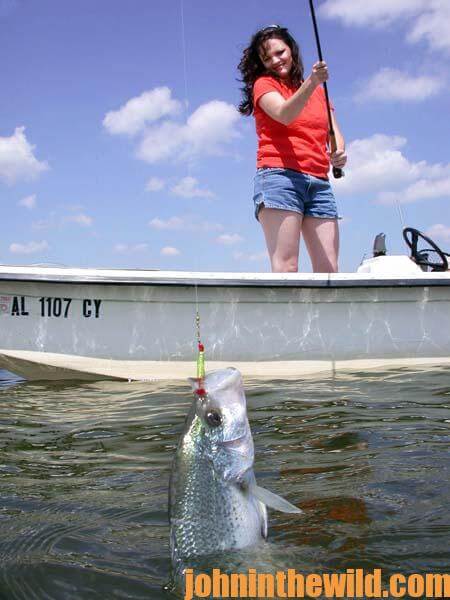 Because Pope set-out long poles on either side of his boat, the jigs pulled by those long poles would pass through a segment of the water where the crappie hadn’t been spooked by the boats. The boat moved fast to keep the jigs close to the surface, and then Pope continued to catch big crappie too shallow to show up on his depth finder, that other anglers never tried to catch.
Because Pope set-out long poles on either side of his boat, the jigs pulled by those long poles would pass through a segment of the water where the crappie hadn’t been spooked by the boats. The boat moved fast to keep the jigs close to the surface, and then Pope continued to catch big crappie too shallow to show up on his depth finder, that other anglers never tried to catch.
“Too, sometimes crappie hold so close to the bottom that the depth finder can’t separate them from the bottom,” Pope said. “Also when you troll along the edge of a creek channel, the crappie may hide under stumps or under brush and won’t show up on your depth finder.” To catch these invisible crappie, Pope would slow his boat down to a snail’s pace, letting his jig sink deep in the water and swimming it just above the bottom. “To find and catch big crappie, fish the segments of the water where no other crappie fishermen fish,” Pope advised.
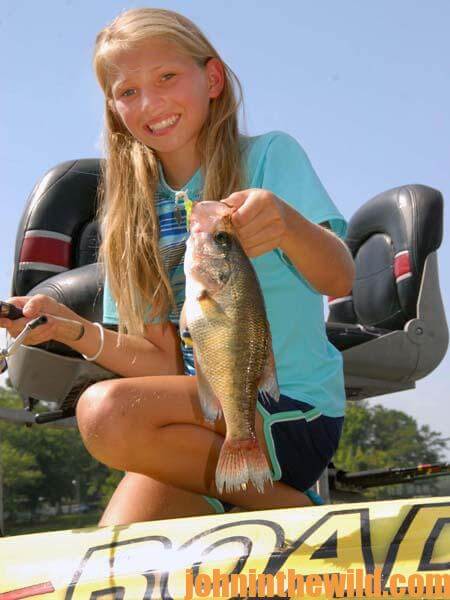 Pope’s Equipment:
Pope’s Equipment:
Steve Pope described the colors of the jigs he fished by the color of the head, the body and the tail. “In dingy water, I’ll fish dark jigs – like blue/blue/blue, blue/green/blue or blue/black/green,” Pope said. “In clear water, I’ll usually fish chartreuse/chartreuse/chartreuse, green/green/green, or chartreuse/chartreuse/green. I’ll use a combination of chartreuse and/or green at any time of the year.” Pope fished 6-pound-test Solar Green line for two reasons. “You easily can tell when you get a strike on the visible Solar Green line. I use 6-pound-test instead of heavier 8-pound-test line, which won’t let your jig troll at the right depth. Although 4-pound-test line will get more strikes than 6-pound-test line will, you lose more crappie on 4-pound-test line than you will on 6-pound-test line.”
To learn much more about crappie fishing, get John E. Phillips’ Kindle eBooks and some print books, “Crappie: How to Catch Them Fall & Winter,” “Crappie: How to Catch Them Spring and Summer,” “Catch Cold Water Crappie Now” and “Catch Crappie All Year: Fishing a Single Pole, Using No Boat and Farming Crappie.” Click here to get these books. To receive for free the “Crappie Catchers’ Cookbook,” by John and Denise Phillips that offers free recipes, click here.



